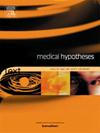Time and the body: A new approach to disease
IF 2.1
4区 医学
Q3 MEDICINE, RESEARCH & EXPERIMENTAL
引用次数: 0
Abstract
A better understanding of the nature of reality could lead to a better understanding of disease. Typically, the body has been viewed through a materialist lens. Yet materialism has been challenged, with compelling evidence, from cognitive and neuroscientists, who describe the way the brain creates the images we perceive; and from physicists, who have been investigating alternate models of reality, such as a holographic universe, for over twenty-five years. If the universe functions like a quantum computer, there would be something more fundamental than matter: information. Space is not the appropriate medium when considering information. This model will look at the human body as it exists against a different “fabric”: time. In an accelerating, expanding universe, time can be expressed in terms of density. Perhaps we should consider the background density when we make our observations.
The human body continuously responds to its perception of time, which is processed through sensory inputs. Time can be conceptualized as a dynamic continuum, analogous to a cone, with a dense, constricted “pit” at one end and an expansive “mouth” at the other. Between these extremes is the present or baseline. Mathematically, the baseline can be derived from the values for pit and mouth; however, for this to be physiologically accurate, the scale of these temporal boundaries must be correctly understood. This hypothesis proposes that a misinterpretation of temporal scale and the subsequent maladaptive responses to these forces contribute to the pathophysiology of various disease states.
求助全文
约1分钟内获得全文
求助全文
来源期刊

Medical hypotheses
医学-医学:研究与实验
CiteScore
10.60
自引率
2.10%
发文量
167
审稿时长
60 days
期刊介绍:
Medical Hypotheses is a forum for ideas in medicine and related biomedical sciences. It will publish interesting and important theoretical papers that foster the diversity and debate upon which the scientific process thrives. The Aims and Scope of Medical Hypotheses are no different now from what was proposed by the founder of the journal, the late Dr David Horrobin. In his introduction to the first issue of the Journal, he asks ''what sorts of papers will be published in Medical Hypotheses? and goes on to answer ''Medical Hypotheses will publish papers which describe theories, ideas which have a great deal of observational support and some hypotheses where experimental support is yet fragmentary''. (Horrobin DF, 1975 Ideas in Biomedical Science: Reasons for the foundation of Medical Hypotheses. Medical Hypotheses Volume 1, Issue 1, January-February 1975, Pages 1-2.). Medical Hypotheses was therefore launched, and still exists today, to give novel, radical new ideas and speculations in medicine open-minded consideration, opening the field to radical hypotheses which would be rejected by most conventional journals. Papers in Medical Hypotheses take a standard scientific form in terms of style, structure and referencing. The journal therefore constitutes a bridge between cutting-edge theory and the mainstream of medical and scientific communication, which ideas must eventually enter if they are to be critiqued and tested against observations.
 求助内容:
求助内容: 应助结果提醒方式:
应助结果提醒方式:


